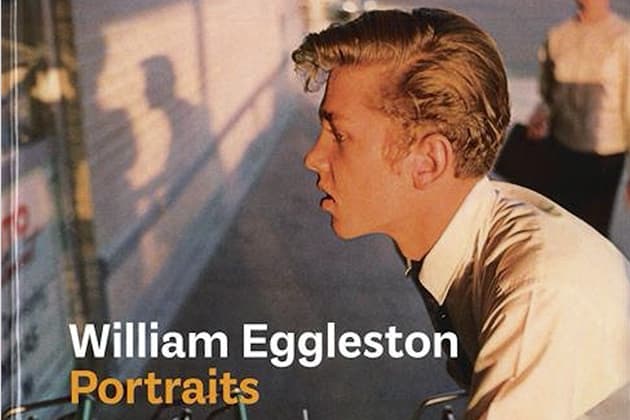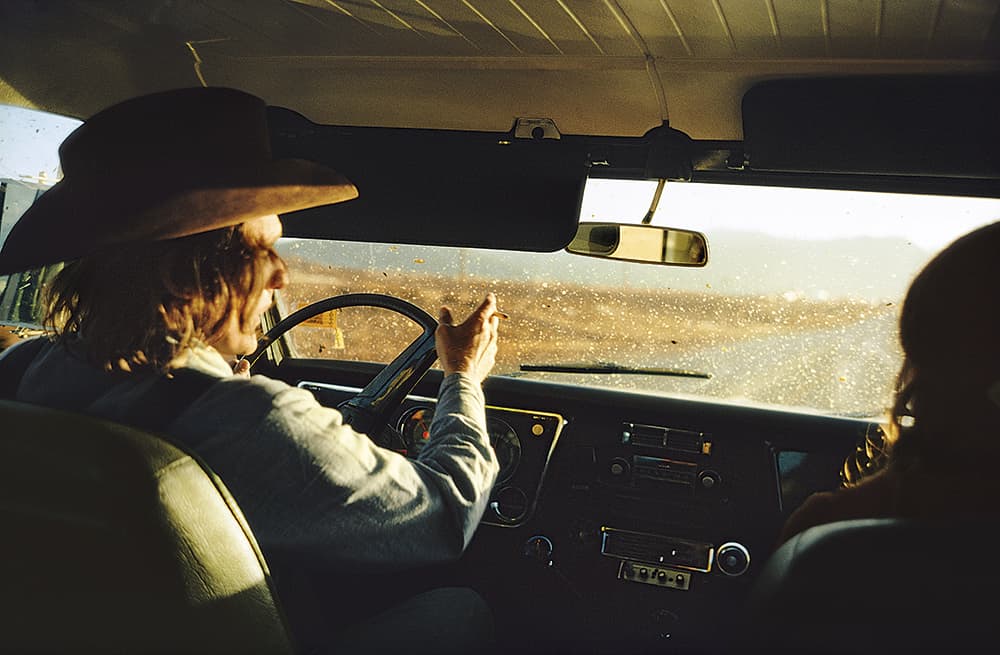
Image of actor, filmmaker and photographer Dennis Hopper, taken between 1970 and 1974. All images by William Eggleston
In last week’s Bookshelf we looked at the work of Paddy Summerfield who, inspired by the American photographers of the day, began to explore the ways in which the everyday could lead to images of almost poetic beauty. One of the most obvious pioneers of this genre also happened to be a pioneer of colour photography: Memphis-born William Eggleston.
Calling Eggleston a pioneer is perhaps overstating it slightly, but his work certainly did much to help shift public perception about the form. Until that point the world of photography had been trapped in the idea that colour images were the tools of advertising and the language of the family snapshot – something superficial and unworthy of real artistic consideration. Ansel Adams, for example, the master of dramatic black & white landscapes, was concerned that colour photography would be a distraction and divert the artist’s attention away from developing a photograph’s true potential. While the technology to easily produce colour photography was available in the 1940s, black & white still remained the true artistic expression.
However, in the late 1960s and early ’70s, a small group of photographers began to expand the visual vocabulary of the photographic medium and inject a bit of colour into proceedings. Most significant among them were Stephen Shore, Joel Meyerowitz and William Eggleston. The appeal was in their ability to find the clear beauty in the everyday world that surrounded them. While this is clearly evident in the work of Meyerowitz and Evans, it perhaps finds its best expression in the rich dye-transfer prints of William Eggleston.
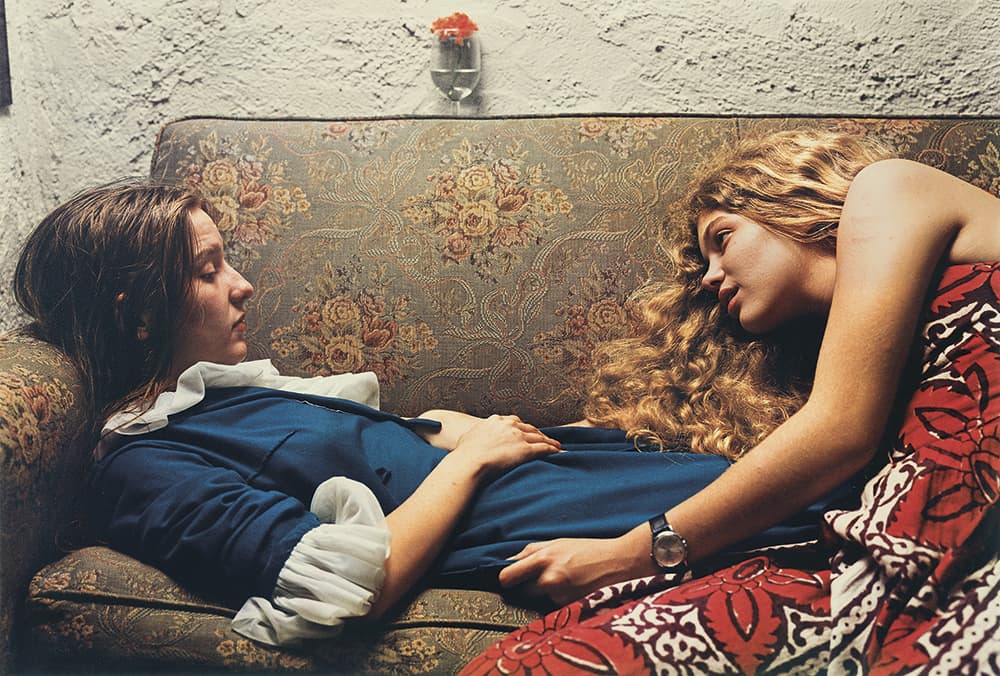
Karen Chatham, with the artist’s cousin Lesa Aldridge, in Memphis, Tennessee, 1974
Prosaic poetry
Eggleston’s work utilises the modern mythological US vernacular – that of gas stations, motels, backyards, diners and small towns – and by representing them in colour, elevates their seeming banality to scenes of stature. This particular volume of work by Eggleston hones the theme a little more; what we are faced with is the people who occupy these spaces. These are Eggleston’s portraits.
The book is a small volume of just 184 pages, but it’s enough for the photographs to get under your skin. It’s all that’s needed. This isn’t a body of work that’s attempting to delve deep into the soul; rather, it’s a collection that revels in the surface details. The view is sufficient. Dig deeper if you like, but you do at the risk of losing sight of the true purpose of Eggleston’s work. As Eggleston himself said, ‘A picture is what it is’.
What’s especially beautiful about much of Eggleston’s work is the fact that so many of the pictures look as if they could have been drawn from a film. There’s a real sense of narrative. You’re free to conjure up your own stories. Who are the two girls lounging on the sofa engaged in conversations (above)? Who are the two gentlemen standing in the forest by a car (below)? While the captions sometimes reveal the secrets, they do absolutely nothing to diminish the mystery inherent within each and every frame.
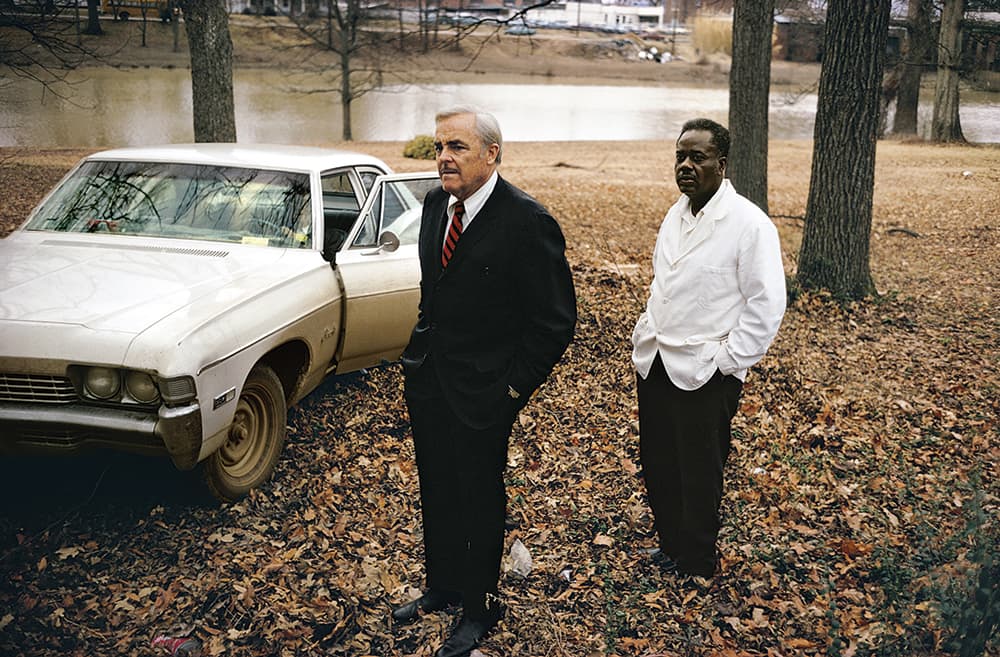
The artist’s uncle, Ayden Schuyler Snr (left), with Jasper Staples, in Cassidy Bayou, Summer, Mississippi, 1969-70
Eggleston is famously shy of media attention and, as with so many artists, this can often mean he has been seen as somewhat misanthropic. Yet nothing could be further from the truth. His work is utterly humane. There’s no judgement, no sensationalism; he doesn’t look to exploit. He’s simply looking to represent and, maybe, celebrate. Just look at the image used on the book’s cover (top left) – a young boy pushing trolleys into a supermarket. The light that spills upon him is ethereal and golden. The boy is in profile and his shadow falls against the side of the supermarket. What should be an utterly mundane scene is transformed into a picture of sublime beauty. You want to know everything about that young boy.
This is the first book to explore Eggleston’s relationship with portraiture, and it has been released to tie in with an exhibition, running until 23 October at London’s National Portrait Gallery. This book is a perfect addition to any bookshelf, but you also owe it to yourself to head to the gallery and see these images as they were intended. They really will stay with you forever.
SCORE: 5 out of 5
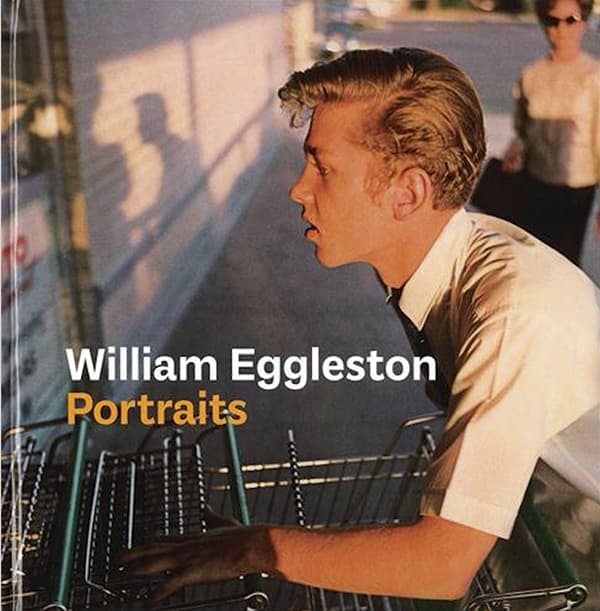
Published by: National Portrait Gallery
Price: £29.95, 184 pages, hardback
ISBN: 978-1855147102

